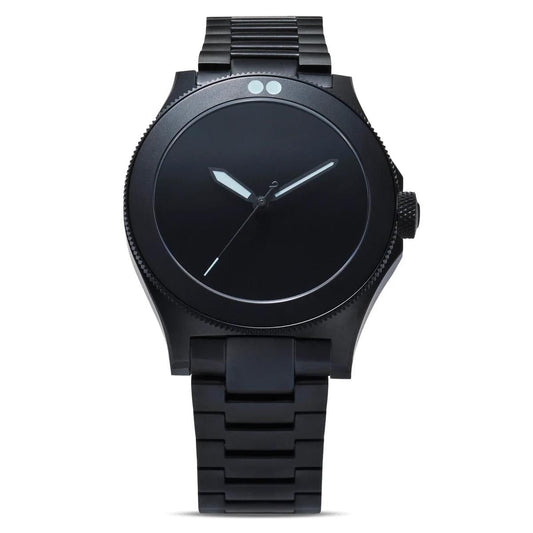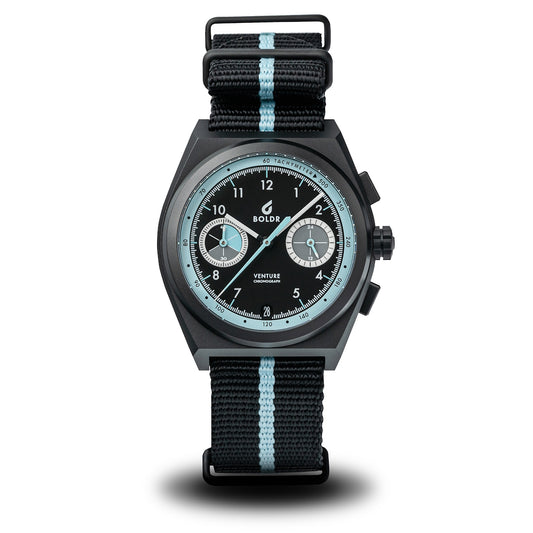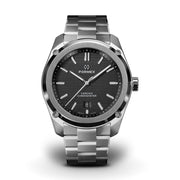In the ever-evolving world of watchmaking, the combination of tradition and technology has given rise to a new era of watches that not only tell the time but also push the boundaries of design and functionality. One of the key driving forces behind this horological evolution is the incorporation of high-tech materials. In this exploration, we delve into the intricate realm of modern watchmaking, where cutting-edge materials and technologies are crafting timepieces that are as resilient as they are beautiful. Let’s look at some materials we know and others you may never have heard of.
Stainless Steel: A Common Choice
 Rolex Datejust - Credit WatchGecko
Rolex Datejust - Credit WatchGecko
A watch case encounters considerable challenges, which is why, typically, most watches are constructed from a durable yet cost-effective material, steel. Rolex, for example, employs Oystersteel, an in-house-developed alloy, for the fabrication of cases and bracelets. Oystersteel is categorized within the 904L steel family, renowned for its outstanding resistance to corrosion. When polished, it achieves a lustrous appearance, similar to precious metals.
In contrast, the industry standard for watches is 316L stainless steel, this gives a more robust look and is highly rust and corrosion resistant. It is also 2-3 times cheaper than 904L which has stated to gain momentum for some brands. In 1985 Rolex became the first watch manufacturer to use 904L in its watches. The 904L alloy (more recently used by Ball) features more than 1.6 times the amounts of chromium, nickel, and molybdenum present in 316L stainless steel. With one to two percent copper content, 904L steel has a higher corrosion and wear resistance compared to the 316L alloy. This also makes it harder and anti-magnetic. It’s worth noting, however, that 904L steel has higher production costs and presents greater challenges in machining compared to its 316L brother.
Carbon Fibre: Beyond Lightweight Elegance
 Squale T-183 - Credit Squale
Squale T-183 - Credit Squale
Carbon fibre, renowned for its strength-to-weight ratio, has become a much more commonly used in watchmaking. Brands like Hublot and Bulgari have embraced this high-tech material, using it not only for its durability but also for its unique aesthetic appeal. The Squale Forged Carbon, for instance, showcases the brand's mastery in blending lightweight carbon fibre with bold design. Carbon fibre now is being used by so many brands, as it’s lighter and gives a stealthier look to a watch.
The use of carbon fibre extends beyond mere aesthetics. Its inherent resistance to corrosion and ability to withstand extreme temperatures make it an ideal material for watch cases. This is particularly advantageous for watches designed for outdoor enthusiasts and those seeking timepieces capable of enduring the rigours of an active lifestyle.
Ceramic: The Allure of Scratch-Resistant Elegance
 Omega Seamaster Diver 300m - Credit WatchGecko
Omega Seamaster Diver 300m - Credit WatchGecko
Ceramic, once reserved for fine china, has found its place in the world of horology. Brands such as IWC and Omega have embraced ceramic for its scratch-resistant properties, ensuring that their timepieces maintain a pristine appearance even after years of wear.
The Omega Seamaster Diver 300M, with its ceramic case and bezel, exemplifies the resilience of this material. The smooth, lustrous finish not only enhances the watch's aesthetic appeal but also speaks to the robustness that ceramic brings to the table. Additionally, ceramic's hypoallergenic properties make it an excellent choice for those with sensitive skin.
Titanium: A Featherweight Giant
 Boldr Venture - Credit WatchGecko
Boldr Venture - Credit WatchGecko


Titanium has long been celebrated for its strength, corrosion resistance, and remarkably light weight. Recognising its potential, brands like Baltic and Tag Heuer have embraced titanium in their watch designs.
The Boldr Venture is a prime example of how titanium can be harnessed to create a robust yet feather-light timepiece. The material's biocompatibility is an added advantage, making it an excellent choice for those with skin sensitivities.
Beyond its physical attributes, titanium's ability to resist the corrosive effects of seawater makes it a preferred material for dive watches.
Silicon: Precision Redefined
Silicon, with its remarkable anti-magnetic properties and resistance to wear, has revolutionised the way watch movements are crafted. Pioneered by brands like Breguet, the use of silicon in escapements and balance springs has become a hallmark of precision watchmaking.
Horage too, have been busy. They are the first independent brand to offer a silicon hairspring, escape wheel and anchor. They are really leading the way with their K1 and K2 movements. The incorporation of silicon components reduces friction within the movement, enhancing accuracy and longevity. Silicon's immunity to magnetic fields also ensures that the timepiece remains unaffected by external magnetic influences, a common challenge faced by traditional mechanical watches.
Brands Make Up Their Own Materials
 Credit WatchGecko
Credit WatchGecko
Brands are constantly pushing the boundaries, always on the lookout for the next new material that they can use. Within their research and development, they often manufacture their own materials. If you want something new, then make your own, here are a few from some of the main players. Everose Gold – Rolex, Sedna Gold – Omega, Honey Gold – A. Lange & Sohne, Hublonium and Magic Gold – Hublot, Goldtech – Panerai.
Precious Metals
For years, brands have been using precious metals within watchmaking. Cases primarily, also many of the components within the watch itself. Gold, Silver, Platinum, Rose Gold, White Gold, Palladium and Rhodium are still being used extensively today.
 Titanium Zirconium - Credit Arcanaut
Titanium Zirconium - Credit Arcanaut
Invar
An iron-nickel alloy devised by the Swiss physicist Charles-Edouard Guillaume in the early 20th century, exhibits an exceptionally low coefficient of thermal expansion. This property makes it suitable for crafting hairsprings used in watch movements.
Fordite
 Arcanaut Fordite Angel's Landing - Credit Arcanaut
Arcanaut Fordite Angel's Landing - Credit Arcanaut
Also referred to as Motor Agate, is a distinctive automotive enamel substance with a fascinating backstory. The initial formation of this layered car paint residue, known as the "rough," occurred unintentionally years ago during the now-extinct method of manually spray-painting numerous production cars in large car factories.
As cars were spray-painted on assembly lines, excess paint gradually built up on the equipment where the car frames received their paint. Over time, a multitude of vibrant layers developed, solidifying as they underwent repeated curing in the ovens used to set the paint on the car bodies. Some of these underlying layers even underwent the baking process up to 100 times.
Eventually, the accrued paint layers reached a point where they became obstructive, too thick, and cumbersome, necessitating removal. The blocks of hardened multi coloured layered paint are then cut into thin pieces and re used as watch dials by Arcanaut Watches. If you like coloured dials, then these are absolutely stunning and piece uniques, as no two dials will ever be identical. The slabs are either cut with the grain or across, to give a unique patterns every time.
So Many More…
 Escudo Chocolate Brown - Credit WatchGecko
Escudo Chocolate Brown - Credit WatchGecko
There are so many materials that are currently in use by watch brands, here is a small selection of some of the more obscure materials.
Tungsten, Tantalum, Bronze, Sapphire, Aluminium, Recycled plastic , Carbon Nanofibers, ALUSIC®, Aluminium-Lithium, Anticorodal 100, Phynox, Carbon TPT®, Graphene, Carbotech and Copper Niobium Superconducter.
Conclusion: A Harmonious Blend of Tradition and Technology
As we navigate the intricate landscape of high-tech materials in horology, it becomes evident that watchmaking is not just about telling time but also about pushing the boundaries of craftsmanship and innovation. Whether it's the lightweight elegance of carbon fibre, the scratch-resistant properties of ceramic, the featherweight strength of titanium, the inventive mix of high-tech alloys, or the precision redefined by silicon, each material contributes to a symphony of innovation that defines the modern era of watchmaking.
In this dynamic mix of tradition and technology, watch enthusiasts can witness the relentless pursuit of excellence as brands experiment with materials that not only enhance functionality but also elevate the aesthetic appeal of a watch. The use of high-tech materials is not merely a trend, it's a testament to the industry's commitment to crafting watches that stand the test of time, both in terms of durability and enduring style. As we embrace this era of horological innovation, we can only anticipate the future breakthroughs that will further shape the landscape of watchmaking.








